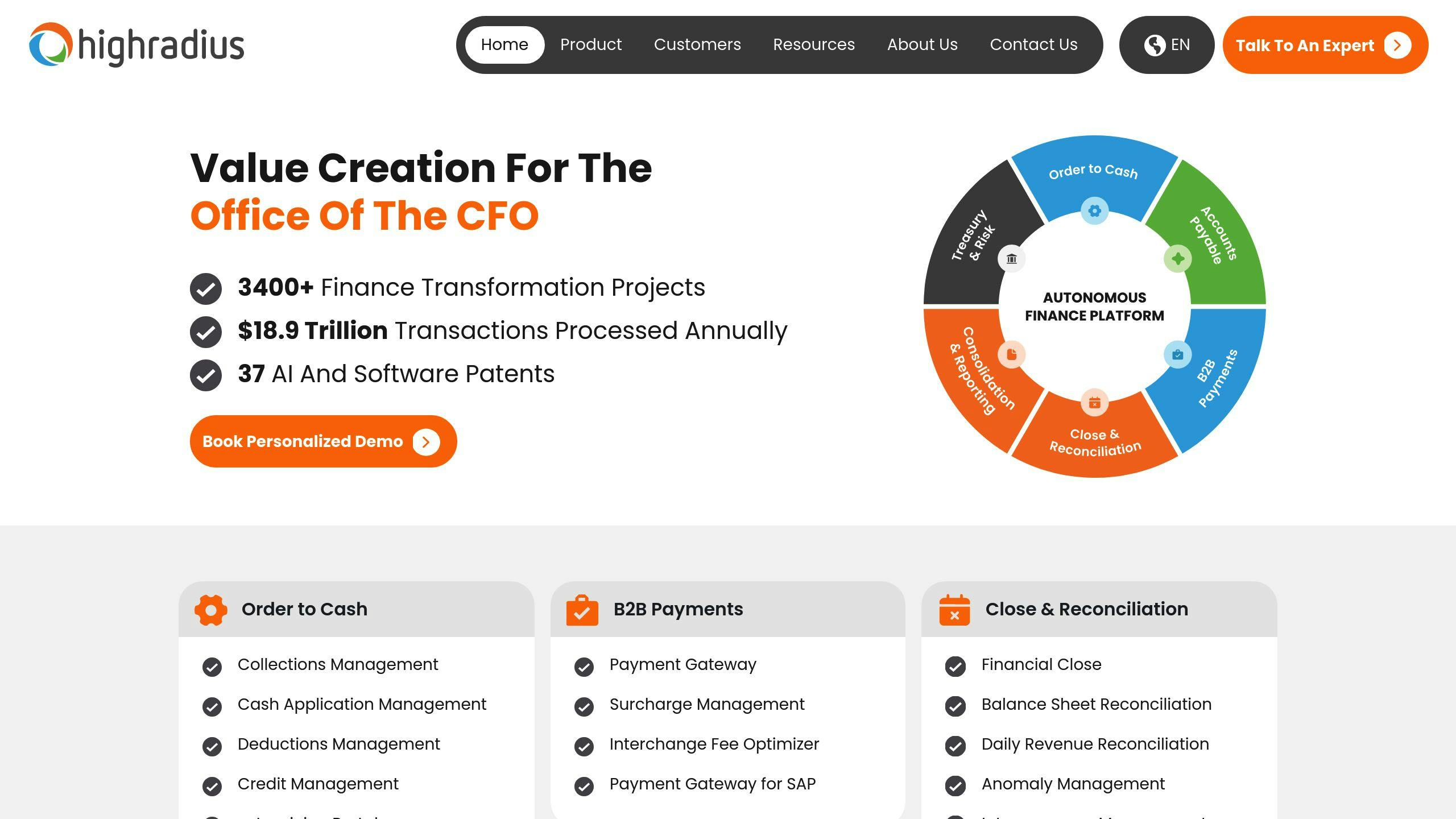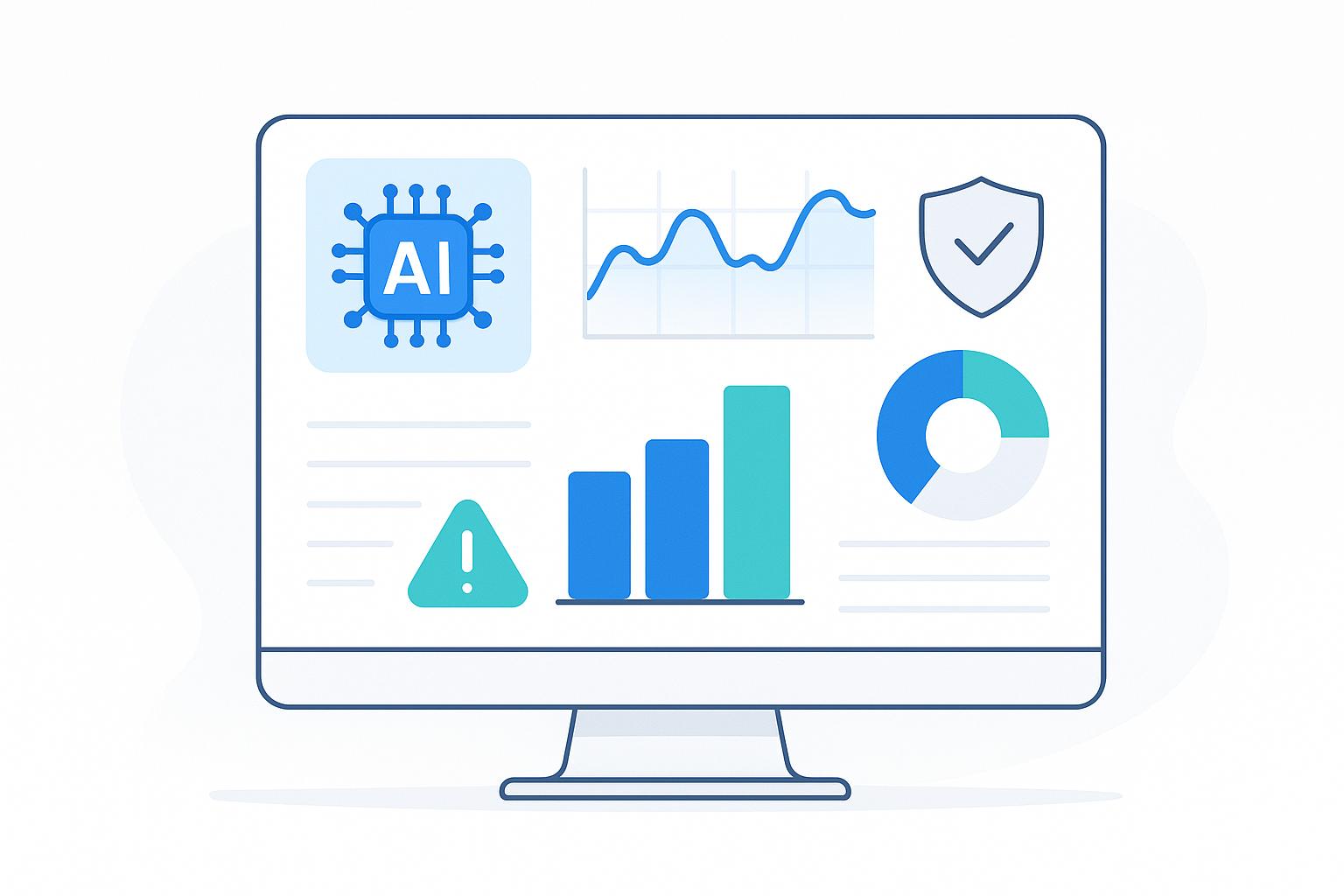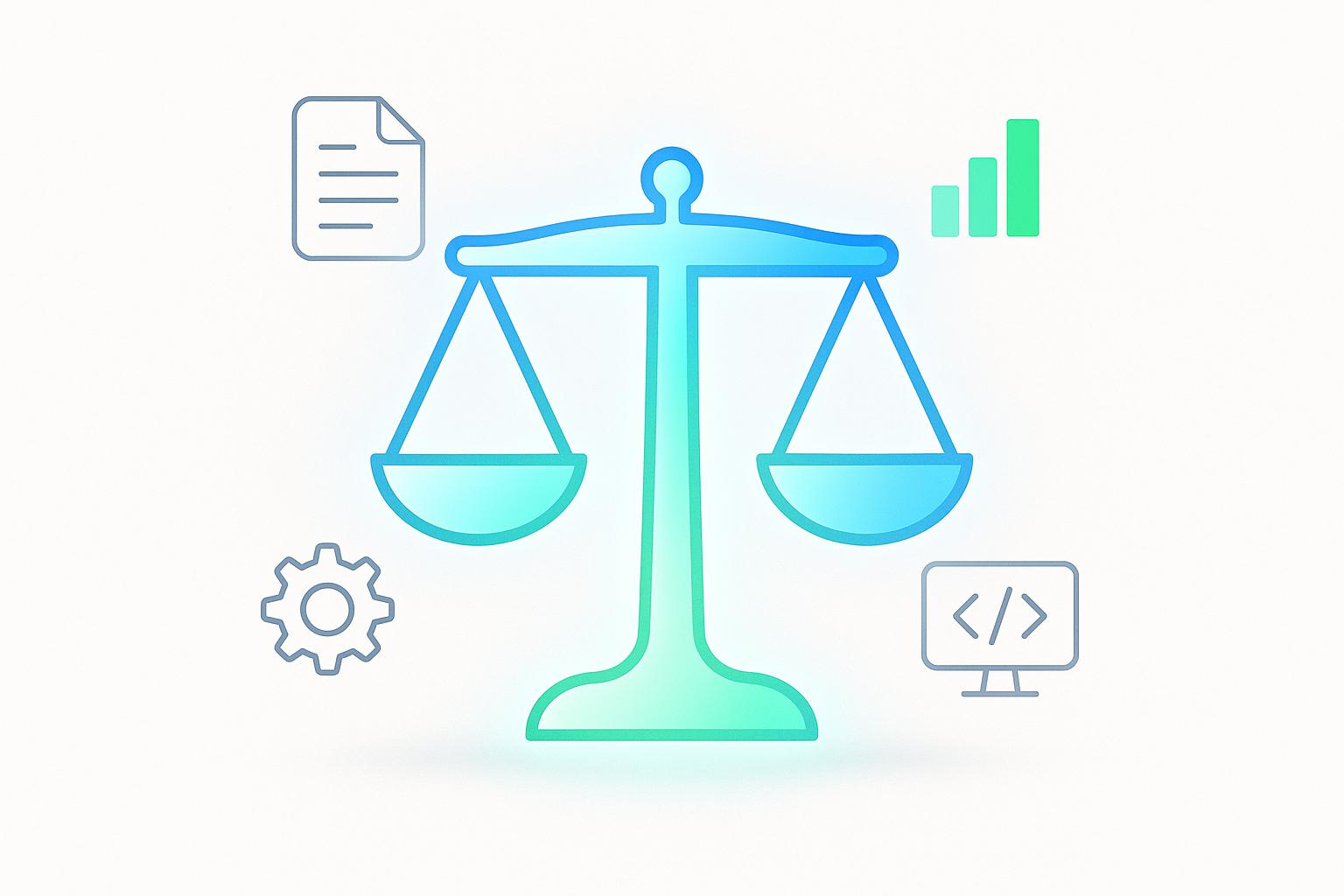Struggling with seasonal cash flow fluctuations? AI tools can help reduce forecasting errors by 20-50%. These platforms analyze historical data, predict seasonal patterns, and prepare businesses for potential cash shortages. Here’s a quick look at four leading tools:
- HighRadius: Daily forecast updates, strong predictive analytics, and ERP integration. Ideal for large businesses but has a complex setup.
- Adaptive Insights: Advanced pattern recognition and scenario modeling. Best for enterprises with irregular seasonal cycles but requires steep learning.
- Planful: Broad ERP integrations and ROI-focused. Excellent for financial planning but may overwhelm small teams.
- Lucid Financials: QuickBooks integration, industry benchmarking, and scalability. Perfect for startups and SMBs but limited visuals in lower tiers.
| Tool | Pros | Cons |
|---|---|---|
| HighRadius | Accurate daily updates, scenario tools | Complicated setup, high cost |
| Adaptive Insights | Advanced analytics, pattern recognition | Steep learning curve, resource-heavy |
| Planful | ERP integrations, high ROI | High cost, complex features |
| Lucid Financials | QuickBooks integration, scalable pricing | Limited visuals in starter plans |
Choose the right tool based on your business size, integration needs, and budget to stay ahead of seasonal cash flow challenges.
See Your Cash Flow Forecasting in Minutes
1. HighRadius

HighRadius leverages deep learning to identify seasonal trends and market changes that traditional methods often overlook. Its forecasting adjusts dynamically, tailoring methods to specific timeframes - using weekly averages for short-term needs and seasonal averages for longer-term planning. This approach directly addresses the challenges of seasonal planning.
The platform's system integrations make it a powerful tool. It connects effortlessly with ERP systems, CRMs, and financial tools, ensuring real-time updates when financial conditions shift.
HighRadius also offers scenario planning tools that let businesses test various simulations. These include analyzing the effects of interest rate changes, regulatory compliance costs, market-driven revenue shifts, and seasonal cash flow variations. This aligns with the critical need for scenario analysis mentioned earlier.
One of its standout features is the daily forecast updates, which maintain a high level of accuracy. The AI engine processes large volumes of financial data to uncover seasonal cash flow patterns, helping businesses make proactive adjustments before cash flow issues arise.
Pricing details aren't publicly available, but the platform emphasizes reducing forecasting errors as a key benefit.
2. Adaptive Insights

Adaptive Insights stands out for its focus on seasonal predictions, using machine learning to recognize patterns in historical data. This makes it a strong choice for businesses dealing with irregular seasonal demand cycles. While it shares HighRadius's ability to make real-time adjustments, its edge lies in its advanced pattern analysis.
The platform's predictive analytics engine can cut forecasting errors by 20-50% by identifying trends in past data. It also offers seamless integration with major ERP systems, CRM platforms, and accounting tools like QuickBooks. This ensures real-time data syncing, so forecasts stay accurate as financial conditions evolve.
Its scenario modeling tool allows businesses to account for multiple seasonal variables at once, such as:
- Revenue fluctuations and inventory needs
- Interest rate changes and competitive dynamics
- Staffing shifts and supply chain updates
- Industry trends and regulatory updates
These simulations help businesses stay prepared during peak seasonal demands, ensuring they have the liquidity to manage cash flow effectively.
Although pricing details aren't readily available, Adaptive Insights is designed to deliver enterprise-level forecasting without requiring deep technical expertise [2].
The platform's self-updating models are another key feature, automatically adjusting to new data patterns. This is especially useful for businesses facing unpredictable seasonal shifts, helping them maintain accurate forecasts even in volatile markets [1].
sbb-itb-17e8ec9
3. Planful

Planful focuses on seasonal cash flow forecasting, leveraging AI to analyze both historical and real-time data. What sets it apart is its seamless integration with ERP systems, CRMs, and accounting software - offering more connectivity than platforms like HighRadius and Adaptive Insights.
Users of Planful report an average ROI of 417% over three years [4], which stands out compared to many other platforms in the market. This makes it a strong option for businesses seeking impactful financial planning tools.
The platform shines in scenario modeling, particularly for companies navigating:
- Sudden market shifts
- Seasonal demand changes
- Supply chain disruptions
- Economic cycles
Planful has been recognized as a Leader in Gartner's 2022 Cloud FP&A Magic Quadrant [3] and holds a 4.5-star rating based on 144 reviews [5].
Pricing details aren't publicly available, but Planful provides tailored pricing plans based on the size of the business and its unique seasonal requirements.
4. Lucid Financials

Lucid Financials is an AI-driven tool designed to simplify seasonal cash flow forecasting, making it a great fit for startups and small businesses aiming for precise financial planning. Its advanced AI algorithms dive into financial data to uncover seasonal trends that traditional spreadsheets often miss.
Similar to Planful's ERP integration capabilities, Lucid Financials focuses on ease of use for smaller teams by offering seamless QuickBooks integration. Its real-time integration system works with QuickBooks, payroll systems, and banking platforms.
Here’s what makes Lucid Financials stand out in seasonal forecasting:
- Automatically creates plans based on past financial patterns
- Compares multiple seasonal scenarios at once
- Benchmarks predictions against industry standards for better accuracy
- Delivers up-to-the-minute cash flow insights via automated bank feeds
"AI-powered financial forecasting tools eliminate uncertainty." - The CEO Views, 2025-01-24 [5]
Lucid combines features like HighRadius' daily updates and Adaptive Insights' pattern recognition with its own unique tools, such as industry benchmarking. This allows users to model outcomes based on factors like payment cycles, revenue surges, or market fluctuations.
For enterprise users, Lucid offers extras like shared Slack support and unlimited team access. Its forecasting capabilities evolve to match the growing complexity of your business.
Advantages and Disadvantages
When comparing these four platforms, businesses need to consider their unique pros and cons. Each tool strikes a balance between forecasting accuracy and the effort required to implement and maintain it.
| Tool | Pros | Cons |
|---|---|---|
| HighRadius | • 95% forecast accuracy rate • Daily data updates • Strong predictive analytics |
• Complicated setup process • Higher cost • May be too advanced for smaller businesses |
| Adaptive Insights | • Advanced pattern recognition • Detailed analytics suite • Scenario modeling capabilities |
• Steep learning curve • Resource-heavy implementation • Limited flexibility for smaller companies |
| Planful | • Broad ERP integrations • Comprehensive financial planning tools • Flexible scenario planning |
• High upfront cost • Requires dedicated training • Complex features may overwhelm small teams |
| Lucid Financials | • Integrates with QuickBooks and payroll tools • Industry benchmarking features • Scalable pricing options |
• Spending caps on lower tiers • Basic models in free version • Limited visuals in starter plan |
The effectiveness of these tools heavily depends on proper implementation and accurate data. Choosing the right platform is crucial for successful seasonal planning.
Here are some key factors to guide your decision:
Data Integration: All platforms offer integration options, but the ease and depth differ. HighRadius and Lucid Financials excel at real-time data updates, while Adaptive Insights and Planful provide more comprehensive but complex integration setups.
Scalability: Growth potential varies across platforms. Lucid Financials offers pricing tiers that adapt as your business grows, while HighRadius and Adaptive Insights are better suited for larger enterprises with advanced needs.
Support and Training: Each tool provides different levels of assistance for onboarding and ongoing training, which can significantly impact how quickly your team adapts.
The best choice aligns with your business's operational needs and your team's ability to manage the platform's complexity.
Conclusion
These tools tackle the seasonal cash flow challenges discussed earlier, but each is designed to meet specific business needs. With advancements in AI-powered forecasting, businesses can now reduce forecasting errors by 20-50%, offering a more reliable approach to managing seasonal cash flow fluctuations.
For startups and small businesses, the best choice depends on factors like scale, budget, and technical demands. HighRadius is ideal for larger businesses needing precise accuracy, while Lucid Financials is a strong option for growing companies, thanks to its flexible pricing and seamless QuickBooks integration.
When deciding on the right tool, focus on these key considerations:
- Implementation Timeline: Select a tool that meets your immediate needs while allowing for future growth.
- Integration Capabilities: Ensure it works well with your current financial systems.
- Cost-to-Value Ratio: Balance the cost with the benefits, such as improved forecasting accuracy.
For startups and SMBs dealing with seasonal cash flow swings, investing in one of these tools can greatly improve their ability to handle fluctuations and maintain financial stability. Always choose a platform that aligns with your operational goals and growth potential.


